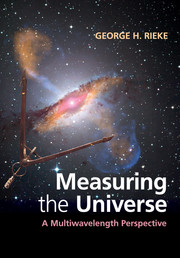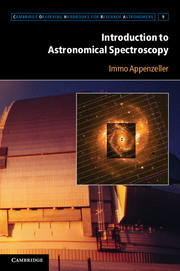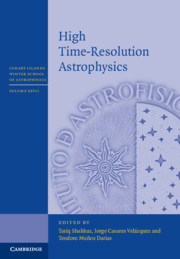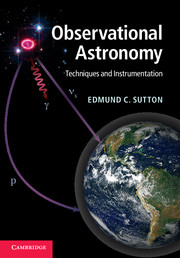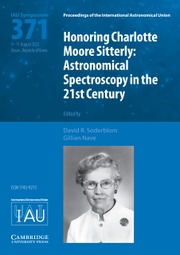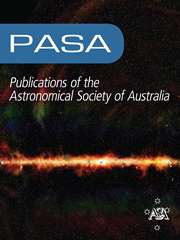Measuring the Universe
A Multiwavelength Perspective
£41.99
- Author: George H. Rieke, University of Arizona
- Date Published: May 2017
- availability: Available
- format: Paperback
- isbn: 9781108405232
£
41.99
Paperback
Other available formats:
Hardback, eBook
Looking for an inspection copy?
This title is not currently available on inspection
-
Astronomy is an observational science, renewed and even revolutionized by new developments in instrumentation. With the resulting growth of multiwavelength investigation as an engine of discovery, it is increasingly important for astronomers to understand the underlying physical principles and operational characteristics for a broad range of instruments. This comprehensive text is ideal for graduate students, active researchers and instrument developers. It is a thorough review of how astronomers obtain their data, covering current approaches to astronomical measurements from radio to gamma rays. The focus is on current technology rather than the history of the field, allowing each topic to be discussed in depth. Areas covered include telescopes, detectors, photometry, spectroscopy, adaptive optics and high-contrast imaging, millimeter-wave and radio receivers, radio and optical/infrared interferometry, and X-ray and gamma-ray astronomy, all at a level that bridges the gap between the basic principles of optics and the subject's abundant specialist literature. Color versions of figures and solutions to selected problems are available online at www.cambridge.org/9780521762298.
Read more- A unified, comprehensive guide to astronomical instrumentation, focusing on modern instrumentation in widespread use and outlining the most up-to-date methods of astronomical data collection
- Includes problem sets and worked examples - electronic versions of the figures are also available online at www.cambridge.org/9780521762298
- Suitable as a main text on astronomical instrumentation or a supplementary text in most astrophysics graduate courses and for professionals active in the field
Awards
- Winner of the 2013 Chambliss Astronomical Writing Award
Reviews & endorsements
'This text fills a long-standing need for a broad treatment of modern observational astronomy techniques suitable for graduate and upper-division undergraduate students of astronomy, physics, and engineering. It provides useful descriptions of practical issues that are encountered when applying the techniques and technologies.' Jason Glenn, University of Colorado, Boulder
See more reviews'Rieke is an ambassador of astronomical hardware, making the world of telescopes, instruments and detectors intelligible and palatable to observers, and those who analyze and model data. This textbook, written for advanced undergraduate and graduate students, provides an excellent starting point and overview for those who venture into building hardware. For those who just use astronomical facilities and data, the book provides precisely all they 'need to know'.' Hans-Walter Rix, Director, Max Planck Institute for Astronomy, Heidelberg
'This textbook fills a real void. It is an excellent overview of the broad range of tools, technologies, and principles that modern observational astronomers use to address the major frontier areas of research. In our era of multi-waveband 'panchromatic' observations, this book will be a valuable resource for educating graduate students and an excellent reference for senior observational astronomers who are venturing into new territory.' Timothy Heckman, Dr A. Hermann Pfund Professor of Physics and Astronomy, Johns Hopkins University
'This excellent textbook has the range and depth to provide a great introduction to the techniques of modern astronomy for senior undergraduates or physics graduates starting an observational PhD with data from one of the major ground or space observatories. From traditional telescopes to gravitational wave detection it brings together in one reference the barrage of approaches we now use to unravel the secrets of the Universe.' Gillian Wright, STFC UK Astronomy Technology Centre
'… this is a directory on extant technology and as such is a useful and comprehensive directory in itself. But it is much more than that alone, covering telescopes, detectors, photometry, spectroscopy, adaptive optics and high-contrast imaging, millimetre-wave and radio reviewers, radio and optical infrared interferometry, and X-ray and gamma-ray astronomy. … Where this book derives its greatest value is in the focus on instruments and detectors …' Spaceflight
'Measuring the Universe provides a backbone of understanding to build on. Among its major strengths are its spare and uncluttered style, its good use of equations and figures, and its problem sets.' Physics Today
Customer reviews
Not yet reviewed
Be the first to review
Review was not posted due to profanity
×Product details
- Date Published: May 2017
- format: Paperback
- isbn: 9781108405232
- length: 355 pages
- dimensions: 245 x 172 x 18 mm
- weight: 0.5kg
- contains: 175 b/w illus. 50 exercises
- availability: Available
Table of Contents
1. Introduction
2. Gathering light - the telescope
3. Sensing the light: detectors for the optical and infrared
4. Imaging and astrometry
5. Photometry and polarimetry
6. Spectroscopy
7. Adaptive optics (AO) and high contrast imaging
8. Submillimeter and radio astronomy
9. Interferometry and aperture synthesis
10. X-ray and gamma-ray
Index.-
Find resources associated with this title
Type Name Unlocked * Format Size Showing of
This title is supported by one or more locked resources. Access to locked resources is granted exclusively by Cambridge University Press to lecturers whose faculty status has been verified. To gain access to locked resources, lecturers should sign in to or register for a Cambridge user account.
Please use locked resources responsibly and exercise your professional discretion when choosing how you share these materials with your students. Other lecturers may wish to use locked resources for assessment purposes and their usefulness is undermined when the source files (for example, solution manuals or test banks) are shared online or via social networks.
Supplementary resources are subject to copyright. Lecturers are permitted to view, print or download these resources for use in their teaching, but may not change them or use them for commercial gain.
If you are having problems accessing these resources please contact [email protected].
Instructors have used or reviewed this title for the following courses
- Astronomical Observations, Instrumentation and Data Analysis
- Astronomical Techniques
- Astronomical Techniques and Instrumentation
- From the first stars to Galaxies
- Introduction to Astronomy
- Modern Observational Techniques
- Observational Astronomy
- Observational Astronomy, Methods & Instrumentation
- Observational Techniques of Modern Astrophysics
- Techniques of Observational Astronomy
Sorry, this resource is locked
Please register or sign in to request access. If you are having problems accessing these resources please email [email protected]
Register Sign in» Proceed
You are now leaving the Cambridge University Press website. Your eBook purchase and download will be completed by our partner www.ebooks.com. Please see the permission section of the www.ebooks.com catalogue page for details of the print & copy limits on our eBooks.
Continue ×Are you sure you want to delete your account?
This cannot be undone.
Thank you for your feedback which will help us improve our service.
If you requested a response, we will make sure to get back to you shortly.
×
